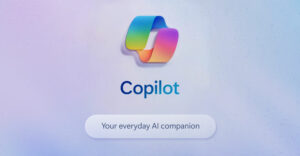I just had one of the most surreal experiences in my life. I attended, as AMD’s guest, the F1 Race in Indianapolis where 14 out of the 20 cars racing, including the Intel car, left the race after the parade lap.

Sharing the experience with me was a group of AMD’s closest friends, mostly actual IT practitioners who favor AMD for mission-critical tasks, but who generally aren’t allowed by their companies to talk about their successes. The reason the teams had pulled out of the race was that Michelin, the tire supplier for those teams, had determined that the tires those teams were racing with were unsafe.
So, in short, we had an international race where a leading tire supplier (tagline: “a better way forward”) admitted to making unsafe products, a group of companies who couldn’t go public with their own successes, and an instance where AMD tromped Intel because Intel’s partner was afraid to compete. There is much that can be learned from this story about AMD, misperceptions, and picking your partners wisely.
AMD: Being Real
Part of what happens when a large company becomes dominant is they often lose touch with their real customers. Executives like to deal with other executives but generally forget, over time, that it is a line employee who has more to say about the success of a relationship, and whether that relationship continues, than the top executive.
AMD’s executive team is extremely approachable. They are often surrounded by their customers who may be product managers, CTOs, or line managers. In fact you are more likely to see an AMD executive with one of these working people than with other CEOs or senior vice presidents. This way they stay much more connected with their real customers and are often more responsive to those customers’ needs.
This also adds significantly to the intelligence they get from these customers and provides them with opportunities you would generally think that the dominant vendor would get. For instance, shortly before this trip I received a non-disclosure agreement from a major international vendor indicating that AMD had been awarded the win for one of that vendor’s most visible enterprise class solutions. This was simply because they were more confident that AMD would come through for them. This comfort drove the decision.
AMD spends time getting to know, personally, the people who are most influential in driving decisions that will be beneficial to a company, and it is generally the listening and responding to the needs of those people that results in unique opportunities. It is no surprise that the two highest-profile notebook computers today are based on AMD products.
The new Acer Ferrari 4000 notebook is currently the “iPod” of notebook computers. Backordered from the instant it was announced, it remains a showcase for co-branding and for a company’s ability to deliver a product that can set the market on its ear. In the same timeframe, HP launched its Livestrong notebook, also based on AMD and tied to one of the most important charities in the world, the Lance Armstrong Foundation. Also reported to be in short supply, this latest notebook is not only a great value, it allows people to actively contribute to cancer research.
Both products reflect on AMD’s primary strength — strong partnerships — and the ability its executives have to relate directly to the common man and woman — something that is almost unique in the technology market today. If you ever see them at a gaming event like E3, you see gamers talking to gamers rather then dry corporate presentations from people who appear to not even understand why people would want to play games. It is this connection that makes AMD strong and this behavior flows right up through their executive sales staff all the way to their CEO.
Misperceptions
You would figure Fortune 500 companies would be able to speak out about the partners that work for them and those that don’t. Unfortunately this simply is not the case; it isn’t as if their IT managers don’t want to, but brands belong to marketing organizations and they don’t share this responsibility lightly. That’s probably as it should be, but it really hurts the underdog in any market because some companies’ wins often don’t get the publicity that is automatically assumed for the dominant player, whoever that may be.
For AMD this is particularly frustrating as they have had impressive wins in servers and workstations over the last several years and have started to make inroads in desktops in the SMB market. Unfortunately, however, even some of their strongest supporters simply are unable to give them the credit they have so richly earned.
This doesn’t mean they don’t take care of those supporters, regardless of the lack of public support. For instance, one of their supporters at the F1 event was a somewhat legendary IT executive who works for one of the most powerful Fortune 500 companies in its segment.
His presence demonstrated several things. First, it suggested that AMD actually listens. The previous year this executive had mentioned that in the U.S. it is the tradition to have a tailgate party. He said that while we are often served gourmet meals, half of the fun is having a picnic with a BBQ, beer, and philosophical chats under the open sky. AMD, hearing this, rented a large RV and put on a great tailgate party at this event, flying in ribs from Tennessee, and it was there that we discussed a variety of interesting topics.
Second, it showed how important it is to choose your partners wisely. AMD had at the event top IT experts from several large companies, key people from several key accounts like IBM, Voodoo and Gateway, and a handful of press/analysts from the microprocessor report and Tom’s Hardware Guide. These were intelligent people who made decisions, not on religion or lack of choice, but based on a considered view of what was out there and they had chosen AMD. It was that choice that had driven their personal successes and it was their pragmatic, rather then religious, method of making that choice that convinced me that these were some of the sharpest people in my industry. It said a lot for AMD that AMD’s executives had chosen to spend time with this group of people.
Making Wise Choices
This latest F1 race drove home that wise-choice message in a dramatic way. You see, the seven teams that had to leave the race had all chosen Michelin tires; the three remaining teams that were able to compete chose Bridgestone.
It seems that the Michelin reps had recommended a tire that would stick better than Bridgestone’s offering but could fail catastrophically as a result, in one instance nearly killing one of the drivers. In addition, Michelin had no back-up plan should their gamble not play out. The end result was that not only were 14 drivers unable to compete but anyone who attended the race will now probably avoid Michelin tires in the future and any of the products co-branded on the cars that did not compete.
One of these brands was Intel, a company that clearly did not choose its partners as wisely as AMD did. Last year Intel’s cars had problems running, this year they didn’t even start. In both instances Intel’s image suffered because of decisions they had little or no control over, and partnerships that were of relatively low quality. Ferrari actually credits AMD with helping them win; Intel’s relationship with Toyota appears to be advertising only. In fact Intel had nothing to do with whether Toyota won or lost, and that, in the end, is the point.
We can learn a lot from companies who take care of their partners like AMD does. We can learn that it’s important to make every decision a well-considered one and that sometimes choosing your partner wisely can be the difference between winning a race and not even being able to start. Perhaps the best lesson here is to make measured decisions particularly with regard to partners and then actually work to ensure the partnership is successful. Some have clearly learned that lesson. Maybe it is time others learned from them.
Rob Enderle, a TechNewsWorld columnist, is the Principal Analyst for the Enderle Group, a consultancy that focuses on personal technology products and trends.




















































